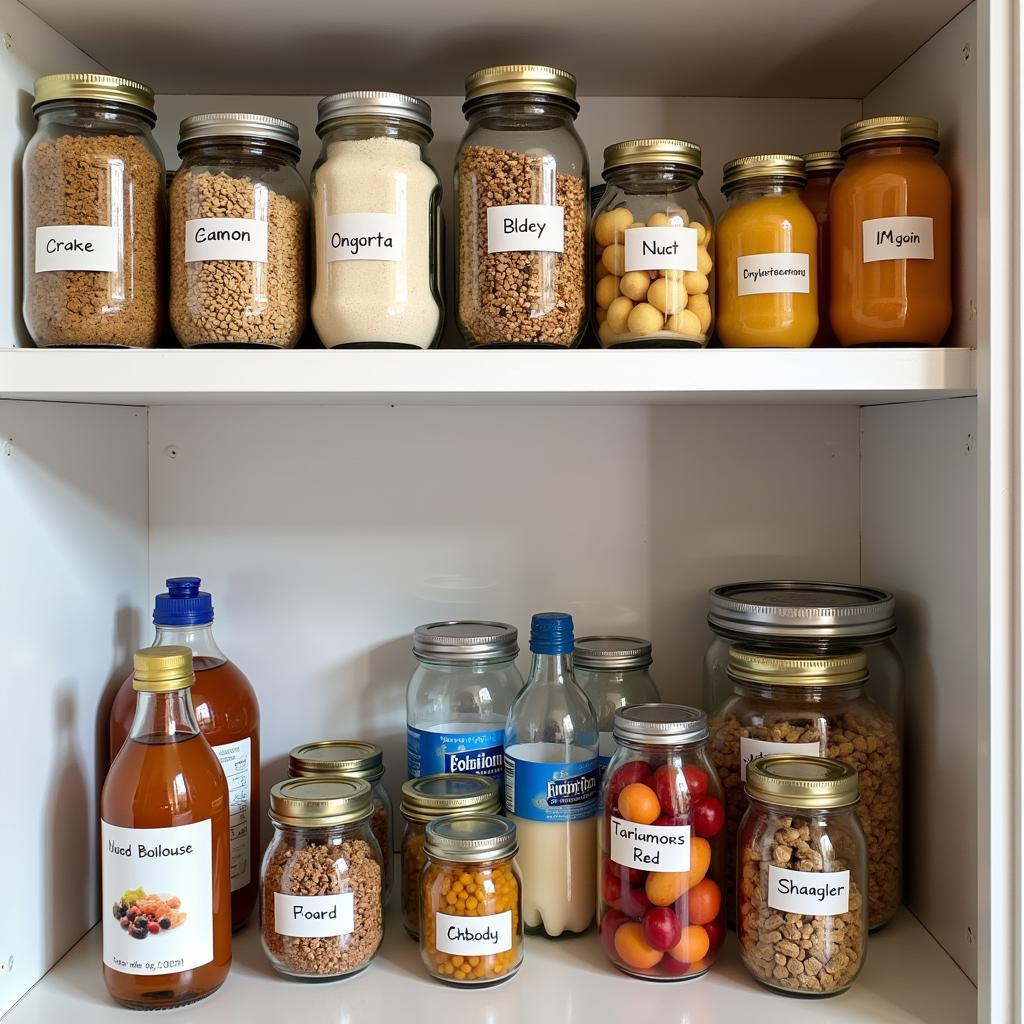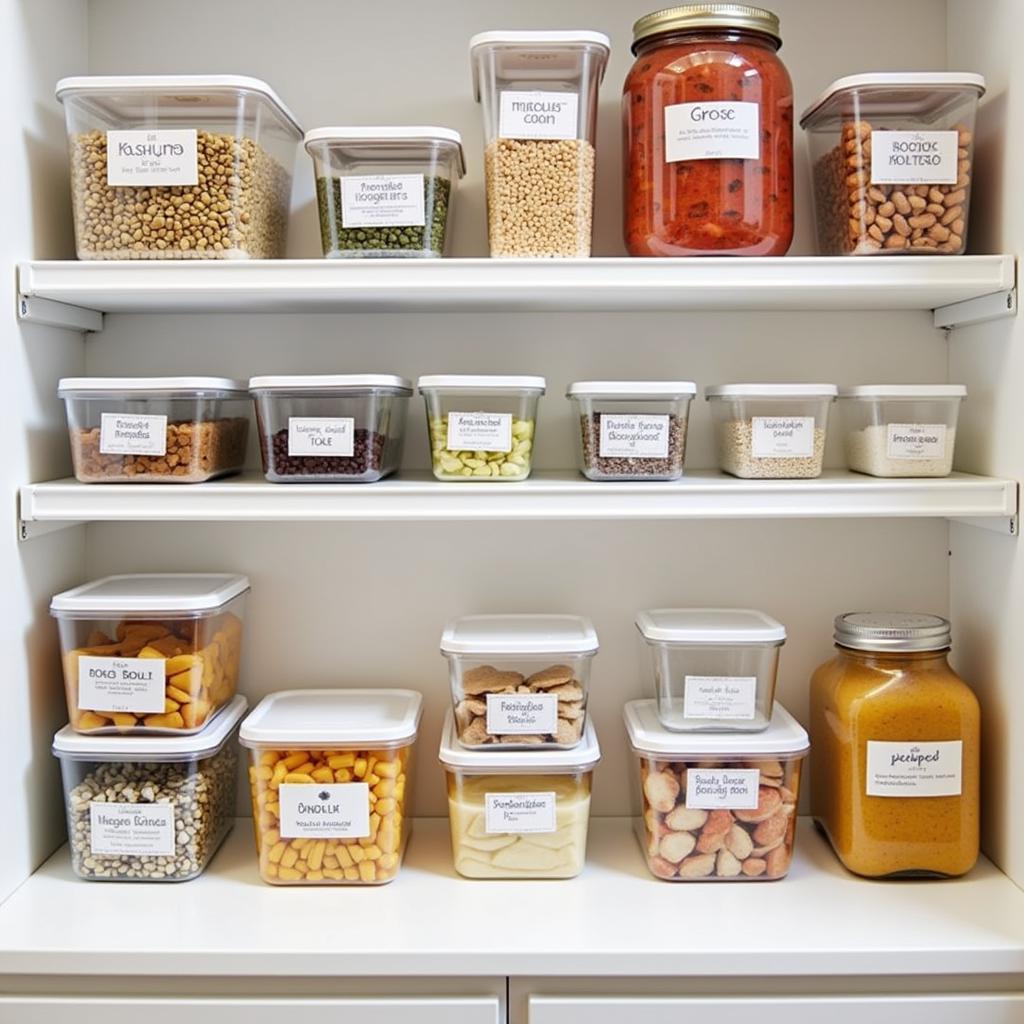Creating a stockpile of Long Lasting Food Supplies is more than just smart planning; it’s an investment in peace of mind. Whether you’re preparing for emergencies, embracing a minimalist lifestyle, or simply aiming for a well-stocked pantry, knowing how to choose and store food for the long haul is essential. This guide will equip you with the knowledge and resources you need to build a resilient and delicious supply of provisions that will stand the test of time.
Building Your Long Lasting Food Supplies: A Step-by-Step Guide
Let’s dive into the practical aspects of stocking up on long lasting food supplies. This step-by-step guide will walk you through the process, ensuring you’re well-prepared for any situation.
-
Assess Your Needs: Consider your household size, dietary restrictions, and potential scenarios you’re preparing for. Are you aiming for a two-week supply or something more extensive? Knowing your needs helps you avoid overbuying and ensures you have the right foods.
-
Prioritize the Essentials: Focus on non-perishable staples like dried beans, rice, lentils, oats, and pasta. These are nutritious, affordable, and have a long shelf life. Don’t forget canned goods like fruits, vegetables, and proteins, which offer variety and convenience.
-
Explore Dried and Dehydrated Options: Dried fruits, vegetables, and meats are excellent additions to your long lasting food supplies. They’re lightweight, compact, and packed with nutrients. Think about dried apricots, banana chips, and jerky for healthy and satisfying snacks.
-
Don’t Forget Water: Water is arguably the most crucial element of survival. Store enough potable water for each member of your household for an extended period. Consider water purification tablets or a filter as a backup.
-
Rotate Your Stock: The key to maintaining long lasting food supplies is regular rotation. Use the “first in, first out” (FIFO) method to ensure you’re consuming the oldest items before they expire and replenishing your stock.
 Organized pantry with long lasting food supplies
Organized pantry with long lasting food supplies
Choosing the Right Long Lasting Food Supplies
Not all non-perishable foods are created equal. Understanding the shelf life and nutritional value of different options is vital for building a sustainable stockpile. Let’s explore some key categories:
Grains and Legumes
Grains like rice, wheat, and oats are excellent sources of carbohydrates and can last for years if stored correctly in airtight containers. Legumes, including beans, lentils, and chickpeas, are protein powerhouses with impressive shelf lives.
Canned Goods
Canned fruits, vegetables, meats, and fish are convenient and readily available. Check expiration dates and opt for low-sodium or no-salt-added varieties when possible.
Dried and Dehydrated Foods
These offer a lightweight and nutrient-rich alternative to fresh produce. Think dried fruits, vegetables, and even powdered milk or eggs.
“Investing in high-quality, long-lasting food supplies isn’t about fear-mongering; it’s about empowerment,” says renowned survivalist expert, Sarah Johnson, Ph.D. “It’s about having the confidence to handle unexpected situations.”
Maintaining Your Long Lasting Food Supplies
Proper storage is crucial for maximizing the shelf life of your food. Keep your supplies in a cool, dry, and dark place. Airtight containers are essential for protecting against moisture, pests, and oxidation.
What about freeze-dried foods?
Freeze-dried foods are an excellent option for long-term storage, retaining their nutritional value and flavor for up to 25 years. While they can be more expensive, their extended shelf life makes them a worthwhile investment.
“Think of your long-lasting food supply as a living entity,” advises nutritionist and preparedness advocate, David Miller, RD. “Regularly inspect your stock, rotate items, and replenish as needed to maintain its vitality.”
 Organized food storage containers for long-term preservation.
Organized food storage containers for long-term preservation.
Conclusion
Building long lasting food supplies is a proactive step towards ensuring your family’s well-being. By following these guidelines and choosing wisely, you can create a pantry that offers both security and culinary satisfaction. Remember, preparedness isn’t just about survival; it’s about thriving, even in challenging times.
FAQ
-
How long do dried beans last? Properly stored, dried beans can last for several years, even up to a decade.
-
What’s the best way to store rice long-term? Store rice in airtight containers in a cool, dry place. Oxygen absorbers can further extend its shelf life.
-
Are canned goods safe to eat after the expiration date? Canned goods can often be consumed safely past their expiration date, but always check for signs of spoilage.
-
What are the best water storage options? Food-grade plastic containers or water bricks are good choices. Avoid storing water in milk jugs or other containers that may leach chemicals.
-
How often should I rotate my food supplies? Aim to rotate your stock every six months to a year, depending on the specific items.
-
What are some good sources of protein for long-term storage? Dried beans, lentils, canned meats, and dehydrated jerky are all excellent protein sources.
-
Where can I learn more about emergency preparedness? Numerous online resources and organizations offer valuable information on emergency preparedness.
Related Articles
- Pantry Staples for Beginners
- Emergency Preparedness Checklist
- Building a Bug-Out Bag
Need assistance? Contact us at Phone Number: 02437655121, Email: minacones@gmail.com Or visit our address: 3PGH+8R9, ĐT70A, thôn Trung, Bắc Từ Liêm, Hà Nội, Việt Nam. We have a 24/7 customer support team.